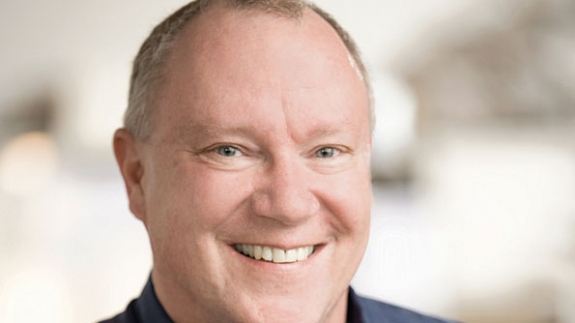Proposed three-digit suicide-prevention ‘Lifeline’ would benefit public-safety communications
About a decade ago, I received a call that no one wants to get—a beloved family member had committed suicide. He was schizophrenic, had tried a couple of times before—cry-for-help attempts, apparently—and he wasn’t good about taking his meds, so the call wasn’t unexpected. Nevertheless, it was stunning and sobering, with all of the “what could I have done to prevent this” questions running rampant amongst family and friends.
Because of this unfortunate event, I was thrilled to learn recently of the FCC’s proposal to create a three-digit number—988—for the National Suicide Prevention Lifeline. The commission’s Wireline Competition Bureau and Office of Economics and Analytics submitted a report to Congress last month that contained the proposal; the National Suicide Hotline Improvement Act of 2018 mandated the report.
What I like even more about this proposed three-digit-number is that it could improve call volumes in our nation’s already overburdened 911 centers and help improve emergency response.
Today, suicide rates are the highest since World War II, increasing by a startling one-third between 1999 and 2017, according to the Centers for Disease Control. Last year, the Lifeline’s specially trained clinicians fielded more than 2.2 million calls and more than 10,000 online interactions. Such calls and interactions are routed from anywhere in the U.S. to the closest certified crisis center, of which 163 exist across the country.
The statistics regarding the number of calls and interactions are eye-opening, especially given that callers have to dial a ten-digit number to reach the Lifeline that is not easily remembered, especially by someone who is so troubled that he/she is contemplating the ultimate solution.
FCC Chairman Ajit Pai has described the suicide problem that afflicts the United States as an “epidemic” that is “disproportionately affecting” at-risk population segments. He wants the commission to issue a notice of proposed rulemaking to solicit public comments regarding the implementation of 988, which would be far easier to remember than today’s ten-digit number, similar to 911 today. The report suggests creating a new three-digit number for this purpose, rather than repurposing an existing three-digit number, e.g., 511 or 611, because it would be faster and easier to implement.
How This Impacts Public Safety Communications
Recently I spoke with Jim Lake, director of the consolidated 911 center in Charleston County, South Carolina, about the 988 concept. Lake is ahead of the curve when it comes to dealing with citizens suffering from mental-health issues. Currently, he and his staff are working toward embedding a mental-health clinician in their center, so emergency callers do not have to wait for an ambulance to arrive, or be whisked to an emergency room, before speaking with a clinician to get the help they so desperately need.
Lake says that his center fields an average of 17 suicide-risk calls per day, or about 6,200 each year. The majority of those calls fall into one of two buckets: calls from citizens who dial 911 and calls from mental-health clinicians, some of whom are Lifeline clinicians. In the latter case, the clinicians do not transfer the caller to the 911 center, if they believe an emergency response is warranted, for a very good reason.
“The clinician is trained to create a bond with the caller that you don’t want to break,” Lake says.
Instead, the clinician transfers any relevant data collected to the 911 center; however, data collection is no easy task given that suicide-risk callers often are in an agitated and/or confused state.
“Our hope is that they can at least get the caller’s location and some other information that will help us determine the correct emergency response,” Lake says.
Intuitively, one might think that implementing 988 will increase public safety’s workload because the Lifeline will receive substantially more calls. But Lake believes the opposite will occur.
Public Education Is Critical
It would take an extensive public-education effort—similar to that which accompanied the rollout of 911 service—to make citizens aware of 988’s existence. But once they are, it is likely that 911 centers would receive less of these calls directly from citizens, which would relieve telecommunicators of the burden of gathering vital information that might be difficult to extract. Second, ambulance runs almost certainly would be reduced, according to Lake.
“The patient is looking for the appropriate help, and a lot of times, that’s not an ambulance and a trip to the emergency room,” Lake says. “If the clinician can get that patient into a treatment center, and they can take an Uber to get there, that will decrease public safety’s workload. And the clinician is much better qualified to make those decisions.”
Lake applauds the FCC for its 988 proposal. “Anything we can do to make it easier for the caller to get the right help is a great idea,” he says.
Using Lessons Learned in 911 to Maximize 988’s Efficiency
Jennifer Kirkland, 911 operations administrator for the Vail (Colorado) Public Safety Communications Center, agrees with Lake, calling the idea “fantastic,” even if it does increase 911 center workloads.
“The tradeoff in potential lives saved is worth it,” Kirkland says.
However, Kirkland offers a couple of suggestions to maximize the effectiveness of the 988 number. She suggests establishment of a protocol similar to the one Vail’s 911 center has with poison control, which is to establish a three-way call. Typically, when someone ingests or otherwise becomes exposed to a toxic substance, they call 911. When they do, the 911 telecommunicator immediately conferences in poison control.
“We can send an ambulance immediately, if poison control thinks that’s indicated, while the caller is still on the line,” Kirkland says. “It’s a huge time-saver.”
Kirkland added that a similar protocol would work well in a 988 scenario, assuming that the caller is cooperative.
“The 911 professional is trained to ask the location questions and others to determine the right response,” Kirkland says. “Meanwhile, the crisis clinician is trained specifically to care for that person while they are on the phone. It would be a good partnership.”
Kirkland further suggests a second protocol that would be triggered, if the caller is uncooperative and/or resistant to emergency response. It involves designating primary and secondary clinicians at each Lifeline center; the primary would be on the phone with the patient, while the secondary would be on the phone with the 911 center.
“The secondary clinician could stay in the background, relaying vital information to the telecommunicator,” she says. “For example, the clinician could let us know that responders need to be cautious when they show up, because the patient is agitated—but help still is being sent.”
I agree wholeheartedly with Lake and Kirkland on all counts and would like to get the ball rolling regarding public comments. The FCC absolutely should implement 988 as the nationwide number for accessing the Lifeline, and do everything possible to expedite the process. This is long overdue. Would it have changed the outcome for our family member? Sadly, we’ll never know. But hopefully it will change the outcome for others.
Glenn Bischoff is technical writer/editor for Mission Critical Partners, a public -safety communications consulting firm headquartered in State College, Pa. Previously, he was editor of IWCE’s Urgent Communications for a decade. He can be emailed at [email protected]. This column can also be viewed at https://resources.missioncriticalpartners.com/insights/proposed-three-digit-suicide-prevention-lifeline-will-benefit-public-safety-communications.



















I wish the number would have started with something besides 9. I can see callers possibly dialing 911 by mistake and of course they will get a response. I agree Suicide is a terrible problem and those people need to be treated gently and like people not just passed off as another crazy person because that is not true.
I am glad that something is being done to address suicidal callers and suicide. I believe its great that the FCC has this as a priority. I too lost a brother to suicide ten years ago. I don’t know if a number dedicated to suicides would have made the difference for him or not. He was in the Detention field so calling 9-1-1 where he would’ve been known was probably not an option. Jennifer’s comments are spot on. We have a lot of things going on in the FCC right now but the most important issue will always be our people and our citizens. Always. I agree-let’s get the ball rolling!